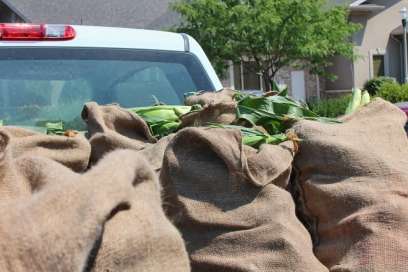Local Expert Blog: Happy Birthday To The RRSP
Saturday November 25th, 2017, 11:00am
Can you believe the Registered Retirement Saving plan (RRSP) is 60 years old? Here’s where it’s been and where it’s going.
Six decades ago, the government of Canada introduced the Registered Retirement Savings Plan (RRSP). By now, most people are familiar with this tax-deferred savings account, yet many still aren’t making use of it.
Currently, just under 6 million Canadians contribute to RRSPs, down from a peak of 6.3 million in 2007. And, in 2015 – the last year for which statistics are available – Canadians had nearly $1 billion in unused RRSP contribution room. “That means a lot of Canadians are not taking advantage of RRSPs,” says David Ablett, Director of Tax and Estate Planning for Investors Group.
“In its 60th year, RRSPs have lost some lustre as a savings device compared to other investment strategies,” he says. Newcomers like the Tax-Free Savings Account (TFSA) may have displaced RRSPs to some degree, but for most Canadians, RRSPs still provide a reliable, tax-efficient way to protect their livelihood during retirement.
An evolving product
The RRSP was introduced by the Liberal Government in 1957. At the time, there was Old Age Security but no Canada or Quebec Pension Plan. Originally called the Registered Retirement Annuity, the annual contribution limit was 10 percent of earnings, up to $2,500 and there was no carry-forward of unused contribution room. At its inception, only life insurance companies carried the product.
“The introduction was very low-key,” Ablett says. It took until the 1960s and ’70s for Canada’s major banks to offer RRSPs. Canadians took their time trying them out. In 1968, the first year contribution data was available, only one in 50 Canadian tax filers – just 172,000 people – had an RRSP. Banks then began to promote them, including marketing the idea of RRSP season, and the number of contributors soared to 1.7 million.
Then RRSPs really started to take off. By 1987, almost 3.5 million Canadians claimed RRSP contributions as a deduction on their tax returns.
Since its inception, significant changes have been made to the plan. In 1974, spousal RRSPs were introduced. In 1978, the Registered Retirement Income Fund (RRIF) came into being.
In the 1990s, contribution limits were hiked to 18 per cent of the previous year’s income, the contribution limit in dollars was raised to $11,500 and the carry-forward rule was introduced to allow unused room to be carried forward for seven years. In 1997, the seven-year carry forward rule was eliminated, allowing for indefinite carry-forward. In that year, there were 6.2 million RRSP contributors, representing 30 percent of all tax filers.
While RRSPs seem like old news, they’re still an important savings vehicle for many Canadians. The main selling point: they offer a tax deduction the year you contribute.
Get more from your RRSP
While RRSPs seem like old news, they’re still an important savings vehicle for many Canadians. The main selling point: they offer a tax deduction the year you contribute. It’s when you withdraw from your RRSP in retirement that you get taxed on the money. The idea is that you contribute more when you’re in a high tax bracket – and get a larger deduction – and then withdraw when you’re in a lower bracket. Because of that, they’re ideal for high-income earners, says Ablett.
Self-employed Canadians, who don’t get a company pension, should also rely on RRSPs. The immediate tax benefits, along with the deductions that come from claiming expenses, help make working for yourself worth it financially. Most people who are self-employed won’t have a high income in retirement, so they shouldn’t get hit by high taxes later in life.
Those who are just starting their careers and low-income earners may want to use their TFSA contribution room instead, says Ablett. Later on, if their income increases, they could take the money out of the TFSA and put it into an RRSP for a tax refund.
The RRSP as it stands today is still a versatile tool for many savers. Looking ahead, it will hopefully continue to adapt to suit the changing needs of Canadians. “The government may continue to tinker with RRSPs, as they have done through the years,” says Ablett. “But I believe RRSPs are, and will continue to be, the best tax-saving, income-building investment vehicle for most Canadians.”
Presented by Ryan A. Ross – consultant with Investors Group Financial Services Inc. in Windsor, Ontario. Find Ryan on Facebook here or reach him by phone at (519) 253-3553 Ext 201 for all of your investment needs.
























